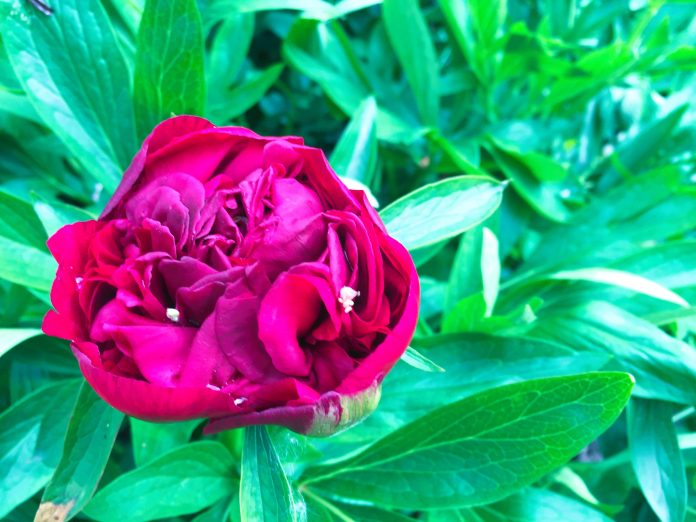Peonies are often considered one of the most beautiful and elegant flowers to grow, prized for their large, fragrant blooms and ability to thrive for decades with minimal care. However, these perennial beauties are not without their challenges. Gardeners, particularly those in cooler climates, may face a variety of issues when growing peonies. Here are some common problems and how to address them to ensure your peonies bloom year after year.
1. Poor Bloom Production
Peonies are known for their stunning blooms, but sometimes they just don’t flower as expected. This can be frustrating for gardeners who have invested time and care in their plants.
Causes:
- Improper Planting Depth: Peonies should be planted at the right depth, with the crown (where the roots meet the stems) just 2-3 inches below the soil surface. Planting too deep can prevent blooming.
- Too Much Shade: While peonies can tolerate partial shade, they generally perform best with full sun (at least 6 hours a day). Lack of sunlight leads to weak plants with fewer or no blooms.
- Excess Fertilizer: Peonies are not heavy feeders, and too much nitrogen-rich fertilizer can promote lush foliage growth at the expense of flowers.
Solutions:
- Ensure your peonies are planted at the correct depth and in a spot with adequate sunlight.
- Use a balanced fertilizer sparingly, focusing on phosphorus to promote blooming rather than nitrogen.
2. Peony Wilt
Peony wilt is a common issue, particularly towards the end of the blooming season. This condition leads to the wilting of the plant’s foliage, often leaving behind a sad, bedraggled appearance.
Causes:
- Botrytis Blight: This fungal disease causes peony buds and flowers to turn brown and mushy, while the foliage wilts.
- Wet Conditions: Peonies that are grown in overly moist, poorly drained soil are more susceptible to fungal infections, especially in cooler, damp conditions.
Solutions:
- To prevent fungal issues, ensure that your peonies are planted in well-draining soil.
- Water at the base of the plant and avoid wetting the foliage.
- Remove and dispose of any infected leaves or flowers promptly to prevent the spread of disease.
3. Ants on Peonies
While ants are often seen crawling over peony buds, many gardeners are concerned that the insects may be damaging the plants. The truth is, ants are generally not harmful to peonies.
Causes:
- Symbiotic Relationship: Ants are attracted to the nectar produced by peony buds, and in turn, they may help protect the plant from other pests. However, if you have a large infestation, they can be a nuisance.
Solutions:
- Simply brushing off the ants or using a mild insecticidal soap can help control their numbers if they become too overwhelming.
- However, it’s important to remember that ants are typically not the problem for peony health, so the best approach is usually just to leave them be.
4. Peony Root Rot
Peony root rot is another issue caused by excess moisture, poor drainage, or fungal infections. If the plant’s roots are rotting, you may notice a lack of growth, wilting, and discolored stems.
Causes:
- Excessive Moisture: Peonies do not like wet feet. If their roots sit in waterlogged soil for extended periods, they can start to rot.
- Fungal Infections: Fungi such as Fusarium or Phytophthora can cause root rot, especially in poorly-draining soil.
Solutions:
- Plant peonies in raised beds or on well-drained soil to avoid water retention around the roots.
- Ensure that your peonies are in a location with good air circulation to minimize fungal problems.
- If root rot is already present, you may need to dig up the affected plants, trim the rotting roots, and replant them in fresh, well-draining soil.
5. Peony Leaf Spot
Peony leaf spot is a fungal disease that affects the plant’s foliage, causing unsightly brown or black spots on the leaves. Over time, this can weaken the plant, affecting both its appearance and overall health.
Causes:
- Wet and Humid Conditions: Leaf spot thrives in damp, warm environments, especially if the plant’s leaves stay wet for extended periods.
- Infected Soil: Spores from previous infections can linger in the soil and reinfect the plant.
Solutions:
- Remove and discard any infected leaves as soon as you notice the disease.
- Avoid overhead watering and water the base of the plant instead.
- Apply a fungicide in early spring, before the leaves emerge, to prevent the disease from taking hold.
6. Peony Herbivores: Deer and Rabbits
While peonies are generally considered deer-resistant, hungry herbivores can sometimes be a problem, especially during the early spring when other food sources are scarce.
Causes:
- Deer and rabbits are attracted to peony shoots, which are tender and new in the spring.
Solutions:
- Consider using physical barriers such as fencing or row covers to protect young plants.
- Planting deer-resistant companion plants around your peonies may also deter herbivores.
Conclusion
Growing peonies can be incredibly rewarding, but like any plant, they come with their own set of challenges. By understanding the potential problems, such as poor blooming, diseases, and pests, and taking preventive measures, you can help ensure your peonies thrive year after year. With a little care, you’ll be able to enjoy their stunning blooms for decades to come.




